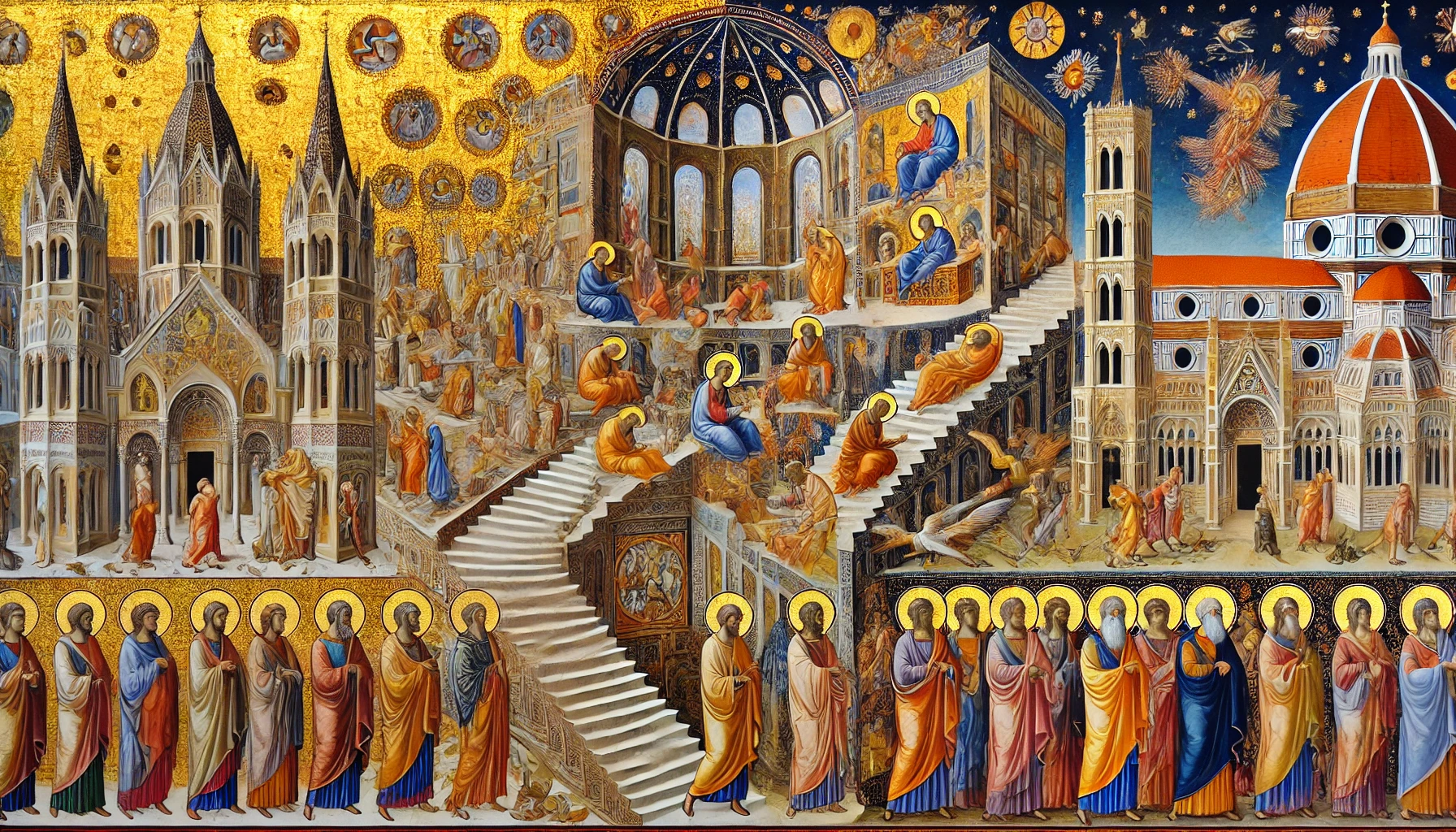European art in the 13th century was influenced by Byzantine art, which used flat, static religious imagery, but Giotto di Bondone introduced three-dimensionality and animation through realistic observation and perspective to vividly depict human emotion. His innovations became the foundation of Renaissance art.
In the 13th century, European art was influenced by Byzantine art. Byzantine art set the example for religious painting. Painters of the time deployed customary religious imagery to effectively tell biblical stories. Figures were clearly symmetrical, giving the impression of being stationary, with expressions devoid of emotion and a steady gaze.
Byzantine art often used gold leaf to emphasize the divine, a feature also found in architecture and mosaic decoration. The golden background symbolized heavenly light, and the figures were depicted in idealized forms. Since the main purpose of art during this period was to convey a religious message, it emphasized a sense of mystery and transcendence rather than realistic, human representation. This is also evident in the work of Andrea Rublev, a leading artist of Byzantine art. His holy paintings are both reverent and majestic, creating a strong religious impression on the people of the time.

By the end of the 13th century, however, a distinct style of painting emerged in Italy. The pioneer of this new style was Giotto di Bondone. Giotto restored space in painting, which had been absent from ancient Roman art for the last millennium, by creating a sense of three-dimensionality in what was then a predominantly two-dimensional world. He also brought about changes in the representation of the human figure. The depiction of facial expressions and the treatment of the gaze made it possible to feel vivid human emotions. Even objects that had been deified became realistic and humanized.
Giotto’s painting was also deeply connected to the social changes of his time. Italy at the end of the Middle Ages was undergoing economic and political changes, and the city-states began to prosper. These changes led to a cultural revival and an increased demand for new artistic expression. Giotto responded to the needs of his time by adopting a more human-centered approach to representation. His works, while dealing with religious themes, also captured human emotions and reality, which impressed viewers.
So how did Giotto achieve paintings that were more three-dimensional and realistic than other paintings of his time? The basis was realistic observation. An example of this is the star in the Adoration of the Magi, painted in the Arena Cathedral in Italy. He observed the appearance of Comet Halley and based his painting on it. In this way, he reflected his observations of objects and people in his paintings.
Giotto also emphasized his realist tendencies by carefully considering composition. Painters of the time were focused on the detail of the flat surface. Even when several figures are shown, they are all facing forward so that they do not overlap each other, and the figures in the foreground and background are similar in size. However, Giotto used a perspective that decreased the size of figures and objects as they moved backward, and he used the superimposition method, in which the figures or objects in front of and behind the artist overlapped. This allowed him to create a sense of distance and depth, as well as a gap between the person in front and the person behind.
Giotto’s innovative technique was not just a technical advance in art; his work offered a new visual experience to the people of his time and served to close the distance between gods and humans. This shift led to a shift away from the religious solemnity of the Middle Ages and an expanded understanding of human existence and emotions.
To the modern eye, his paintings still have a medieval atmosphere. However, he was a painter who vividly expressed the subtle and intense emotions of human beings, and his achievements inspired later Renaissance painters. Giotto’s work was an important bridge between the Middle Ages and the Renaissance, and his artistic legacy still resonates with many today.
Giotto’s influence wasn’t limited to painters; his work also had a profound effect on the architects and sculptors of his time. Brunelleschi, the designer of Florence Cathedral, adapted Giotto’s perspective to architecture, giving the building a greater sense of three-dimensionality. Giotto’s artistic innovations opened up new possibilities in a variety of fields, and his work became an important driving force in the artistic development of the Middle Ages and Renaissance.